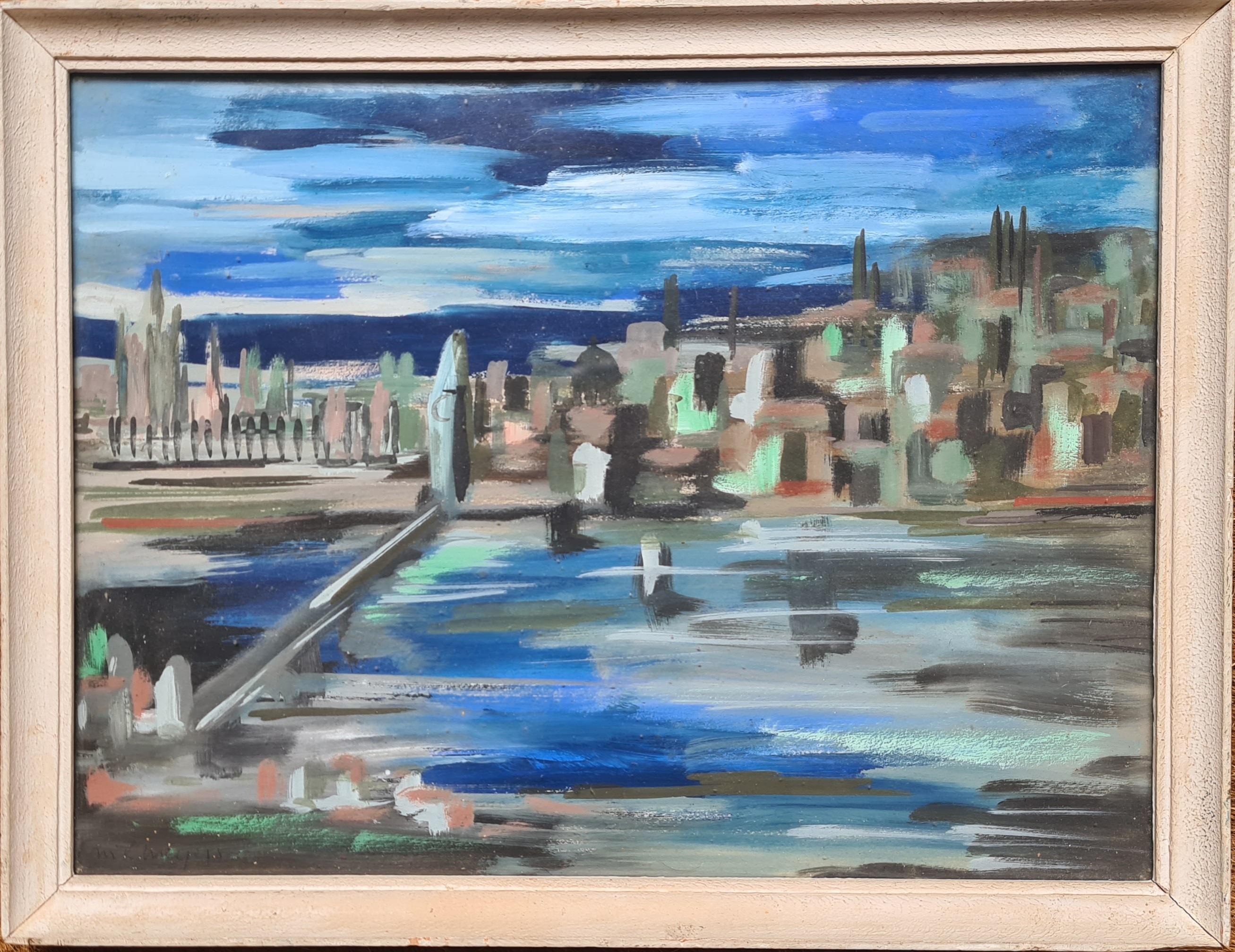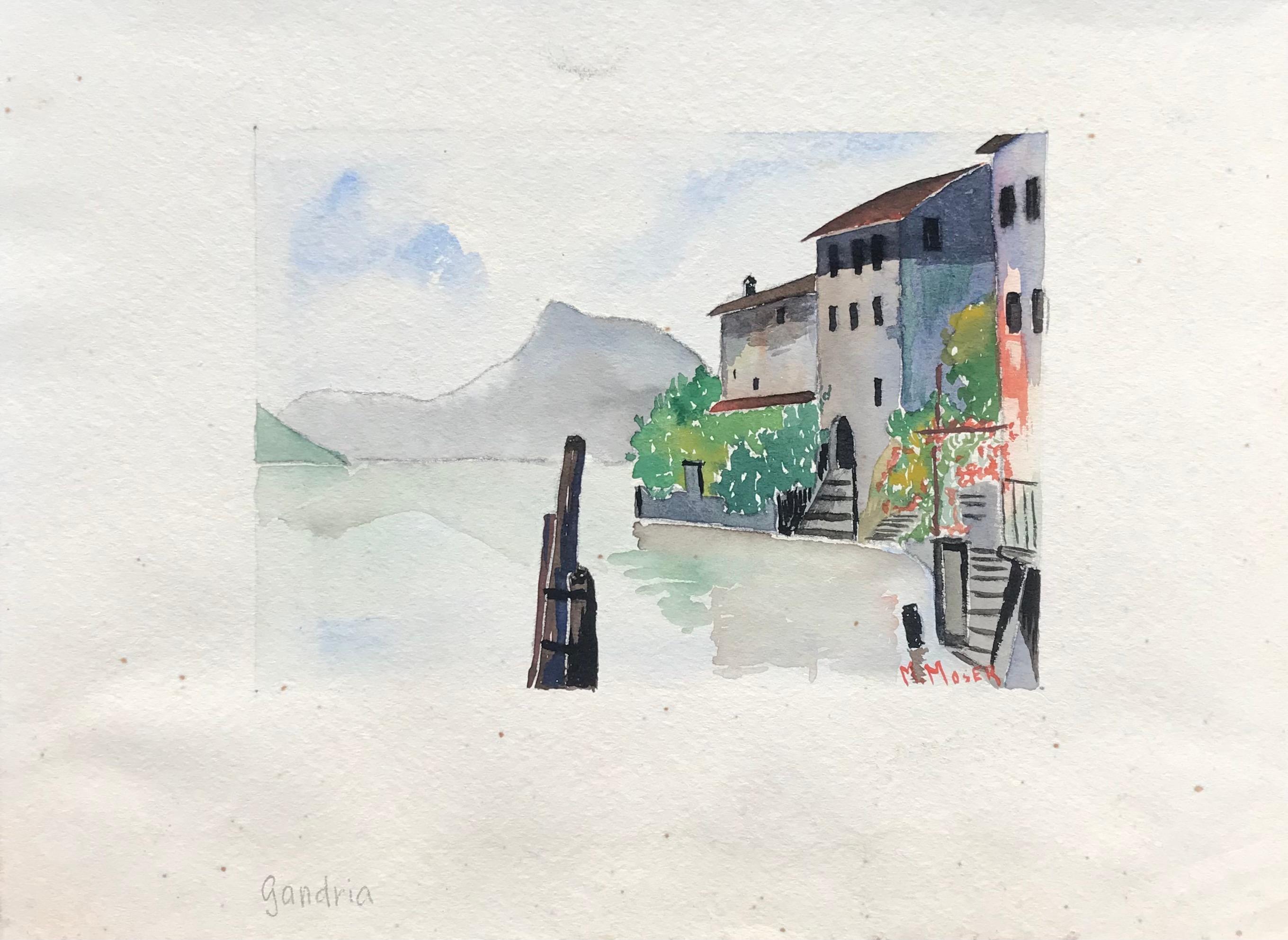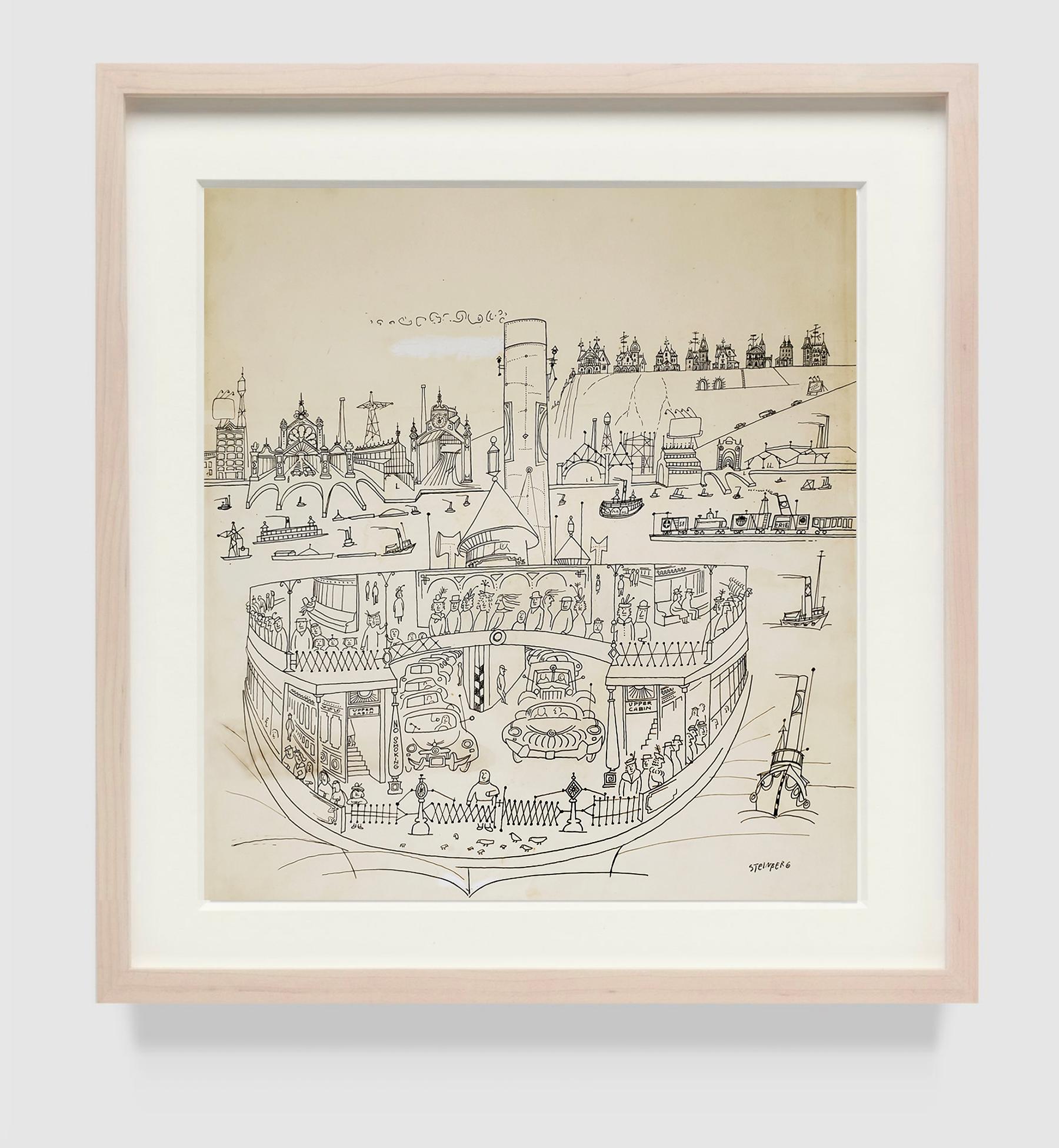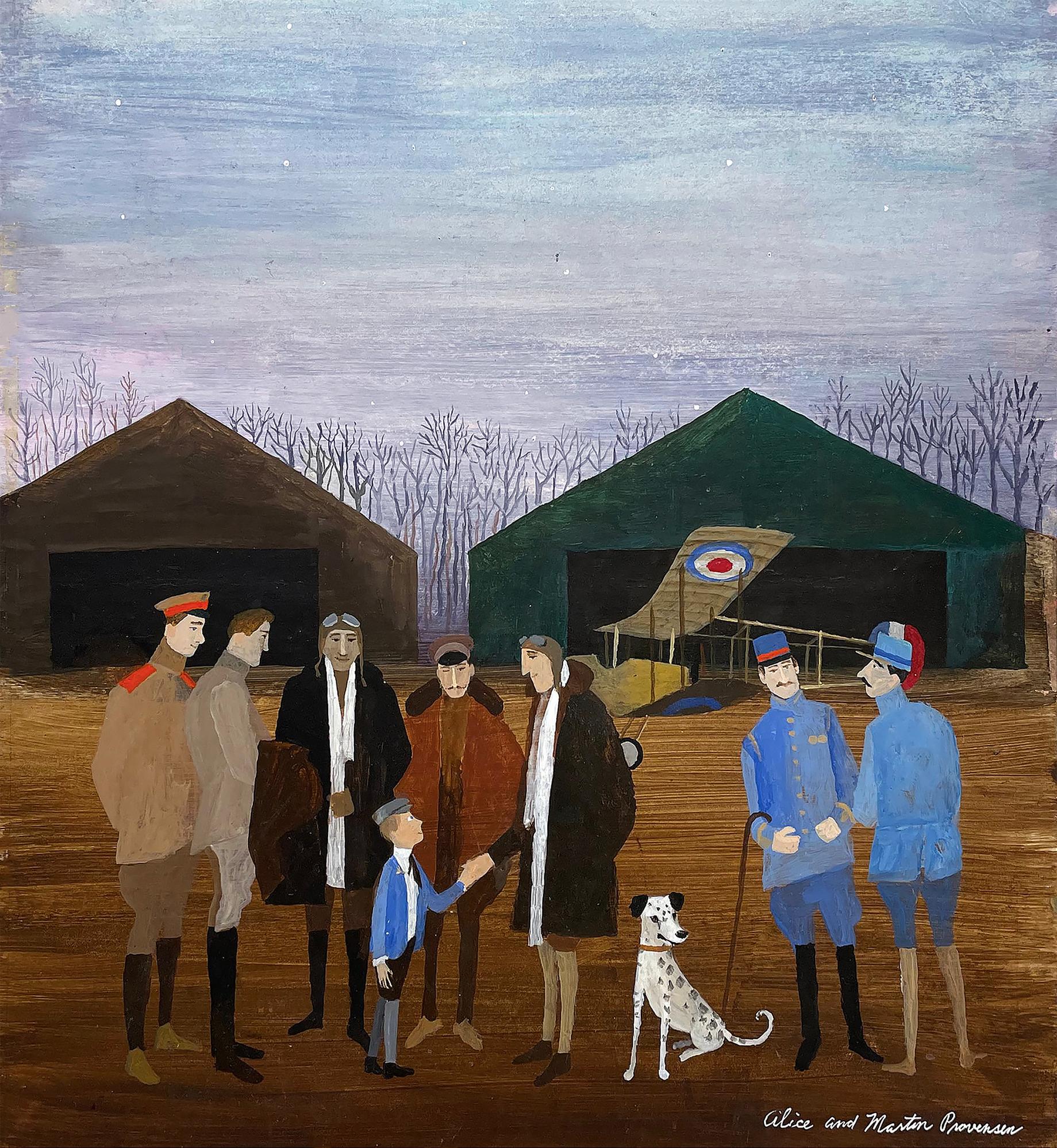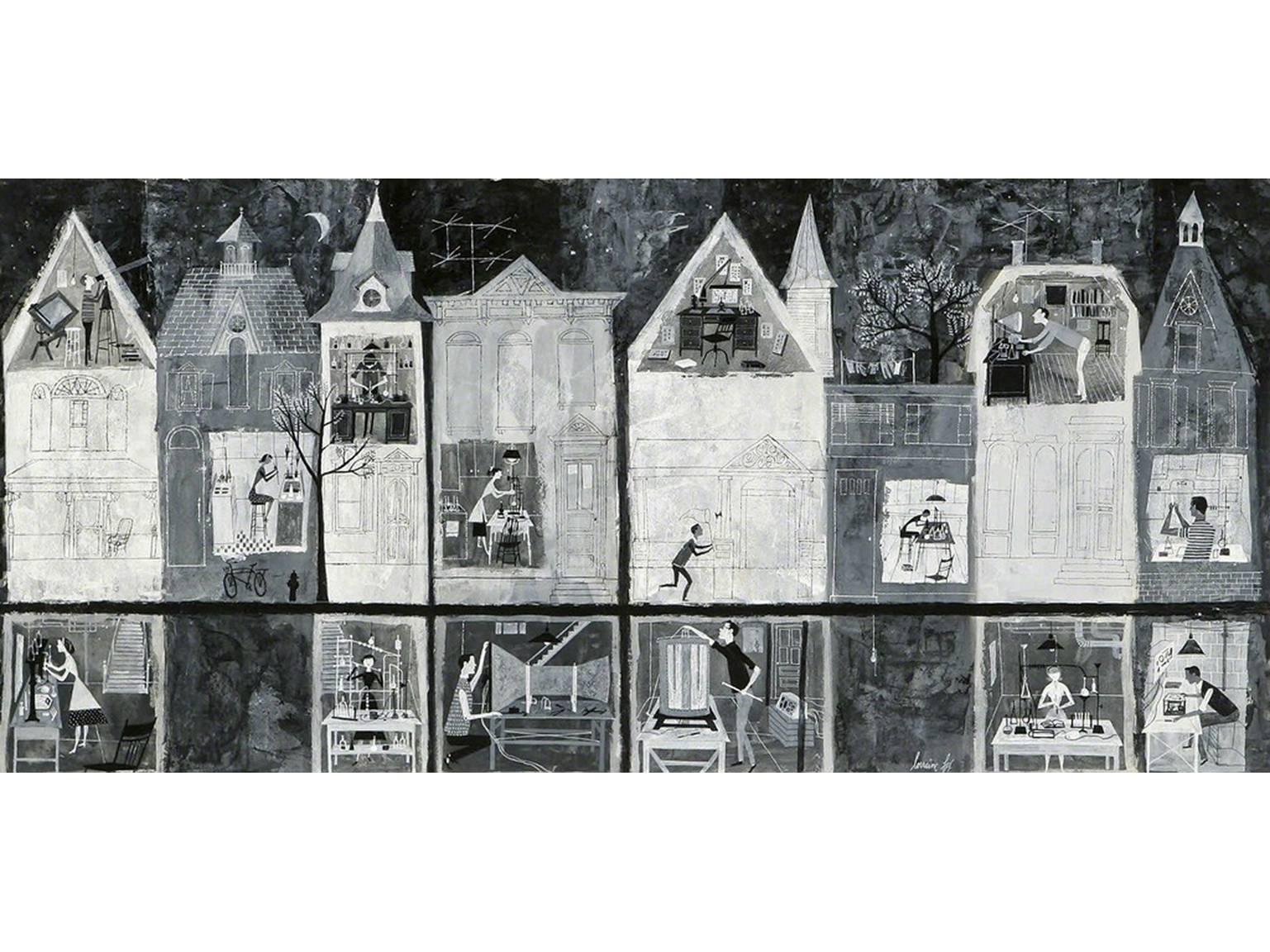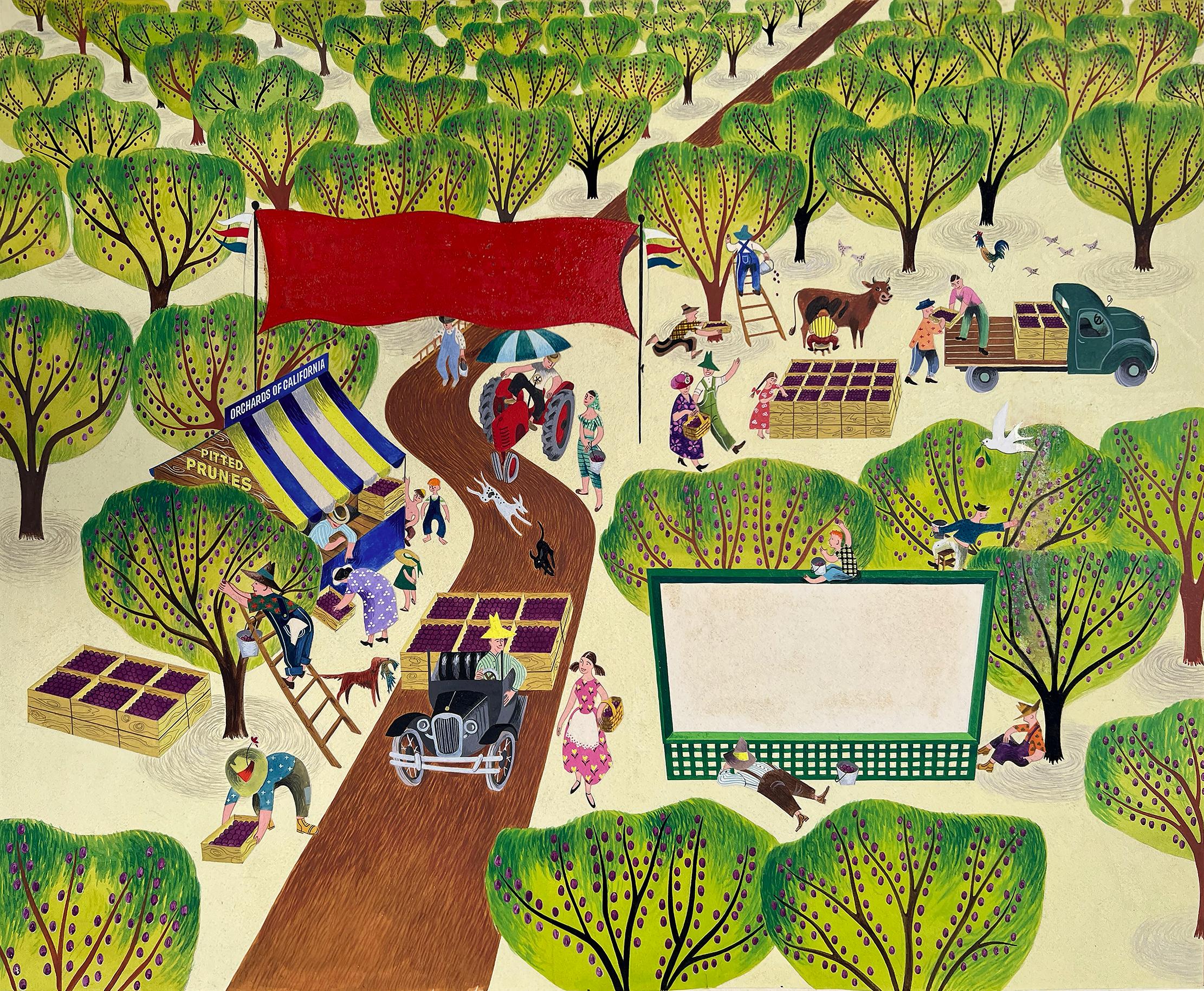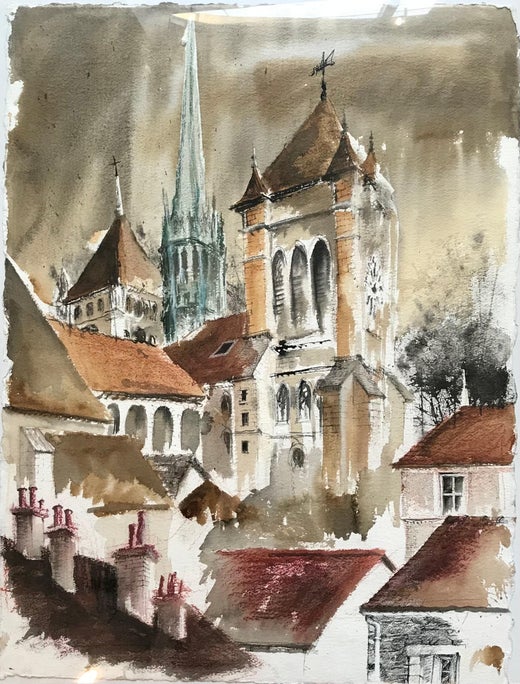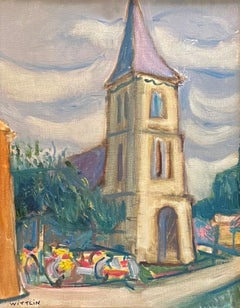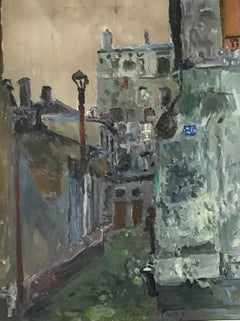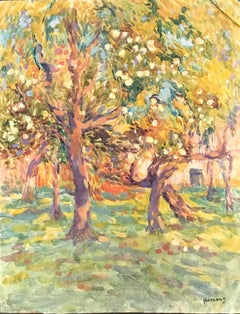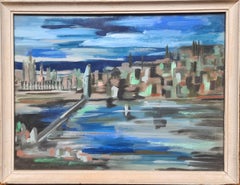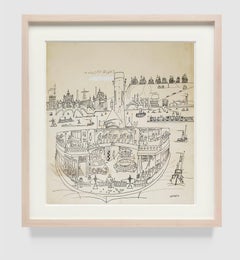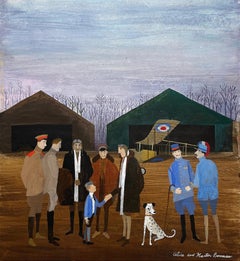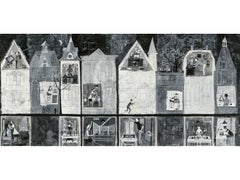Items Similar to Bugnet street, Evian by Pierre Duc - watercolor on paper 54x73 cm
Want more images or videos?
Request additional images or videos from the seller
1 of 12
Pierre DucBugnet street, Evian by Pierre Duc - watercolor on paper 54x73 cm1989
1989
On Hold
$1,900
On Hold
£1,443.36
On Hold
€1,662.02
On Hold
CA$2,718.14
On Hold
A$2,981.54
On Hold
CHF 1,537.47
On Hold
MX$35,611.53
On Hold
NOK 19,499.77
On Hold
SEK 18,293
On Hold
DKK 12,420.25
About the Item
Pierre Duc (born in 1945) is a French painter, printmaker and sculptor
A former student of the sculptor Georges Oudot (who created among others the academician swords of Edgar Faure and Jacques Soustelle), he graduated from the School of Fine Arts in Besançon in engraving.
Pierre Duc was a plastic arts teacher at the Lycée de Champagnole and at the IUFM in Franche-Comté.
He has exhibited since 1972 in Besançon, Strasbourg, Paris, Lyon, and takes part in numerous exhibitions, biennials.
Pierre Duc also built monumental sculptures, L'Éternité and Xavier Marmier in Pontarlier, the Fontaine du Temps and the Greyhounds of Belle-Frize in Champagnole, Saint Vernier in Arbois, Une Tranche d'Univers in Crimolois, the Doubs and the Loue in Dole, the two memorials for the veterans of North Africa and Indochina in Dijon, the Vauban of the citadel of Besançon, and created ephemeral works of land art.
Laureate in Cultural Affairs in 1979, first prize in sculpture from the city of Belfort in 1987, first prize at the 1993 Dijon International Festival and Luxeuil in 1996, prize from the General Council of Touraine in 2000.
Work on Canson paper
Brown wooden with plexiglass
89 x 70 x 1,5 cm
- Creator:Pierre Duc (1945, French)
- Creation Year:1989
- Dimensions:Height: 28.75 in (73 cm)Width: 21.26 in (54 cm)Depth: 0.4 in (1 cm)
- Medium:
- Movement & Style:
- Period:
- Condition:Frame a little damaged by age.
- Gallery Location:Geneva, CH
- Reference Number:1stDibs: LU143428276482
Pierre Duc
Pierre Duc (born in 1945) is a French painter, printmaker and sculptor A former student of the sculptor Georges Oudot (who created among others the academician swords of Edgar Faure and Jacques Soustelle), he graduated from the School of Fine Arts in Besançon in engraving. Pierre Duc was a plastic arts teacher at the Lycée de Champagnole and at the IUFM in Franche-Comté. He has exhibited since 1972 in Besançon, Strasbourg, Paris, Lyon, and takes part in numerous exhibitions, biennials. Pierre Duc also built monumental sculptures, L'Éternité and Xavier Marmier in Pontarlier, the Fontaine du Temps and the Greyhounds of Belle-Frize in Champagnole, Saint Vernier in Arbois, Une Tranche d'Univers in Crimolois, the Doubs and the Loue in Dole, the two memorials for the veterans of North Africa and Indochina in Dijon, the Vauban of the citadel of Besançon, and created ephemeral works of land art. Laureate in Cultural Affairs in 1979, first prize in sculpture from the city of Belfort in 1987, first prize at the 1993 Dijon International Festival and Luxeuil in 1996, prize from the General Council of Touraine in 2000.
About the Seller
4.9
Platinum Seller
Premium sellers with a 4.7+ rating and 24-hour response times
Established in 2016
1stDibs seller since 2020
286 sales on 1stDibs
Typical response time: 4 hours
- ShippingRetrieving quote...Shipping from: Geneva, Switzerland
- Return Policy
Authenticity Guarantee
In the unlikely event there’s an issue with an item’s authenticity, contact us within 1 year for a full refund. DetailsMoney-Back Guarantee
If your item is not as described, is damaged in transit, or does not arrive, contact us within 7 days for a full refund. Details24-Hour Cancellation
You have a 24-hour grace period in which to reconsider your purchase, with no questions asked.Vetted Professional Sellers
Our world-class sellers must adhere to strict standards for service and quality, maintaining the integrity of our listings.Price-Match Guarantee
If you find that a seller listed the same item for a lower price elsewhere, we’ll match it.Trusted Global Delivery
Our best-in-class carrier network provides specialized shipping options worldwide, including custom delivery.More From This Seller
View AllFor Suzy and Jacques by Alois Wittlin - Gouache on canvas 25.5x33.5 cm
Located in Geneva, CH
Alois E. Wittlin (1903-1979) was a Swiss painter recognized for his depiction of landscapes and scenes inspired by everyday life. His works often featured vibrant rural settings, cap...
Category
1950s Modern Landscape Paintings
Materials
Canvas, Gouache
Port de Mallorca, Palma by Pierre Desaules - Gouache on paper 29x44 cm
By Pierre Desaules
Located in Geneva, CH
Work on paper
Brown wooden frame with glass pane
51,5 x 66 x 3,5 cm
Category
1950s Modern Landscape Paintings
Materials
Gouache
The twenty-six by Paul Mathey - Watercolor 36x48 cm
By Paul Mathey
Located in Geneva, CH
Paul Albert Mathey is the son of Charles and Elisa Beaujon. Orphaned at 14, he was taken in by an uncle and spent his childhood in New York. In 1931, he married Claire-Lise Monnier, ...
Category
Mid-20th Century Modern Landscape Paintings
Materials
Pastel, Watercolor
$528 Sale Price
56% Off
"Orchard" by Emile Hornung - Watercolor on paper 33x44 cm
By Charles Émile Hornung
Located in Geneva, CH
Work on paper
Category
Mid-20th Century Modern Landscape Paintings
Materials
Watercolor
$376 Sale Price
31% Off
Ocean liners, Santa Cruz of Tenerife by Pierre Desaules - Gouache on paper 30x44
By Pierre Desaules
Located in Geneva, CH
Work on paper
Category
1950s Modern Landscape Paintings
Materials
Gouache
Chatting in the shade by Hermann Urban - Watercolor
By Hermann Urban
Located in Geneva, CH
Work on paper
Golden wooden frame with glass pane
55 x 47 x 2 cm
Category
Early 20th Century Modern Landscape Paintings
Materials
Watercolor
$376 Sale Price
51% Off
You May Also Like
London and the River Thames.
Located in Cotignac, FR
Modern Impressionist gouache on paper view of London and the river Thames by M K Meyer. The painting is signed bottom right and titled to the backboard 'Londres'. Presented in a plai...
Category
Late 20th Century Modern Landscape Paintings
Materials
Gouache
New York Harbor with Ferry boats and Victorian Houses - Holiday Magazine Cover
By Saul Steinberg
Located in Miami, FL
Steinberg's Holiday Magazine Cover, " The North of Jersey " is similar to his famous New Yorker Cover "View of the World from 9th Avenue”. ...
Category
1950s American Modern Landscape Drawings and Watercolors
Materials
India Ink, Gouache
"The Glorious Flight - Across the Channel with Louis Bleriot" - Children's Book
By Alice and Martin Provensen
Located in Miami, FL
Study for "The Glorious Flight - Across the Channel with Louis Bleriot"; 1983; Gouache on Illustration Board; 14.5" x 13.75"; Signed Lower Right; Unframed.
From Wikipedia, the free encyclopedia
Alice Rose[1] Provensen (née Twitchell; August 14, 1918[2] – April 23, 2018[3]) and Martin Provensen...
Category
1980s American Modern Figurative Paintings
Materials
Gouache, Board
Looking Into a Neighborhood - Ginger Bread Houses - Women Illustrators
By Lorraine Fox
Located in Miami, FL
Looking Into a Neighborhood , Dear Paul
This is an intriguingly charming work by an overlooked and brilliant mid-century female artist - illustrator, and educator. Lorraine Fox. ...
Category
1950s Modern Figurative Paintings
Materials
Gouache
Happy California Prune Farmers - Female Illustrator - Mid Century
Located in Miami, FL
Commercial illustration depicting happy California framers for California Prunes. The work is rendered in a charming and highly stylized manner. Unfr...
Category
1950s American Modern Figurative Paintings
Materials
Gouache
Alfa Romeo Traffic Stop - Playboy Cartoon - Mid Century
Located in Miami, FL
The enduring appeal of Ben Denison's work is not what would be considered corny men's magazine humor of the early 1960s, but rather his masterful painting skills. In the present wor...
Category
1960s Modern Landscape Paintings
Materials
Gouache, Board, Pencil
More Ways To Browse
Tropical Island Art
Vintage Christmas Village
Vintage Hay Wagon
Vintage Pastel Landscape
William Ship Painting
Wolf Kahn Pastels
Wyoming Oil Painting
Yvette Bossiere
1910s Oil Painting
Adriaen Van De Velde
Agnes Reeve
Aldro Hibbard Thompson
Alfred De Breanski Snr
Alicia Dubnyckyj
Amalfi Coast Oil Painting
Ameglio Merio
Ana Guzman
Andre Devambez
